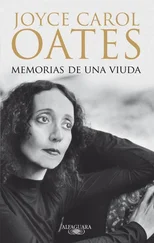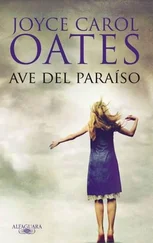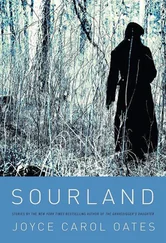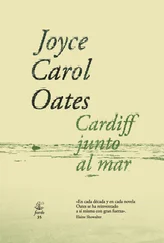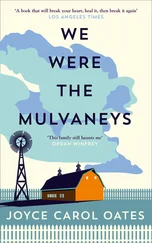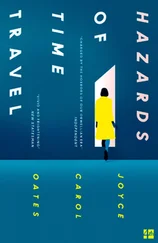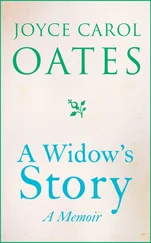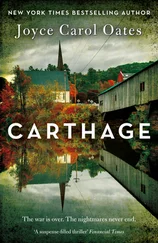JOYCE CAROL OATES
The Accursed

DEDICATION
for my husband and first reader, Charlie Gross;
and for my dear friends Elaine Pagels and James Cone
EPIGRAPH
From an obscure little village we have become the capital of America.
—ASHBEL GREEN, SPEAKING OF PRINCETON, NEW JERSEY, 1783
All diseases of Christians are to be ascribed to demons.
—ST. AUGUSTINE
CONTENTS
Dedication
Epigraph
Author’s Note
Map
Prologue
Part One - DEMON BRIDEGROOM
Ash Wednesday Eve, 1905
Postscript: “Ash Wednesday Eve, 1905”
Narcissus
The Spectral Daughter
Angel Trumpet; Or, “Mr. Mayte of Virginia”
Author’s Note: Princeton Snobbery
The Unspeakable I
The Burning Girl
Author’s Note: The Historian’s Confession
The Spectral Wife
The Demon Bridegroom
Part Two - THE CURSE INCARNATE
The Duel
Postscript: The Historian’s Dilemma
The Unspeakable II
The Cruel Husband
The Search Cont’d
October 1905
“God’s Creation as Viewed from the Evolutionary Hypothesis”
The Phantom Lovers
The Turquoise-Marbled Book
The Bog Kingdom
Postscript: Archaeopteryx
The Curse Incarnate
Part Three - “THE BRAIN, WITHIN ITS GROOVE . . .”
“Voices”
Bluestocking Temptress
The Glass Owl
“Ratiocination Our Salvation”
The Ochre-Runnered Sleigh
“Snake Frenzy”
Postscript: Nature’s Burden
“Defeat at Charleston”
“My Precious Darling . . .”
“A Narrow Fellow in the Grass . . .”
Dr. Schuyler Skaats Wheeler’s Novelty Machine
Quatre Face
“Angel Trumpet” Elucidated
“Armageddon”
Part Four - THE CURSE EXORCISED
Cold Spring
21 May 1906
Lieutenant Bayard by Night
Postscript: On the Matter of the “Unspeakable” at Princeton
“Here Dwells Happiness”
The Nordic Soul
Terra Incognita I
Terra Incognita II
The Wheatsheaf Enigma I
The Wheatsheaf Enigma II
“Sole Living Heir of Nothingness”
The Temptation of Woodrow Wilson
Postscript: “The Second Battle of Princeton”
Dr. De Sweinitz’s Prescription
The Curse Exorcised
A Game of Draughts
The Death of Winslow Slade
“Revolution Is the Hour of Laughter”
The Crosswicks Miracle
Epilogue: The Covenant
Acknowledgments
About the Author
Novels by Joyce Carol Oates
Credits
Copyright
About the Publisher
AUTHOR’S NOTE
An event enters “history” when it is recorded. But there may be multiple, and competing, histories; as there are multiple, and competing, eyewitness accounts.
In this chronicle of the mysterious, seemingly linked events occurring in, and in the vicinity of, Princeton, New Jersey, in the approximate years 1900–1910, “histories” have been condensed to a single “history” as a decade in time has been condensed, for purposes of aesthetic unity, to a period of approximately fourteen months in 1905–1906.
I know that a historian should be “objective”—but I am so passionately involved in this chronicle, and so eager to expose to a new century of readers some of the revelations regarding a tragic sequence of events occurring in the early years of the twentieth century in central New Jersey, it is very difficult for me to retain a calm, let alone a scholarly, tone. I have long been dismayed by the shoddy histories that have been written about this era in Princeton—for instance, Q. T. Hollinger’s The Unsolved Enigma of the Crosswicks Curse: A Fresh Inquiry (1949), a compendium of truths, half-truths, and outright falsehoods published by a local amateur historian in an effort to correct the most obvious errors of previous historians (Tite, Birdseye, Worthing, and Croft-Crooke) and the one-time best seller The Vampire Murders of Old Princeton (1938) by an “anonymous” author (believed to be a resident of the West End of Princeton), a notorious exploitive effort that dwells upon the superficial “sensational” aspects of the Curse, at the expense of the more subtle and less evident—i.e., the psychological, moral, and spiritual.
I am embarrassed to state here, so bluntly, at the very start of my chronicle, my particular qualifications for taking on this challenging project. So I will mention only that, like several key individuals in this chronicle, I am a graduate of Princeton University (Class of 1927). I have long been a native Princetonian, born in February 1906, and baptized in the First Presbyterian Church of Princeton; I am descended from two of the oldest Princeton families, the Strachans and the van Dycks; my family residence was that austere old French Normandy stone mansion at 87 Hodge Road, now owned by strangers with a name ending in –stein who, it is said, have barbarously “gutted” the interior of the house and “renovated” it in a “more modern” style. (I apologize for this intercalation! It is not so much an emotional as it is an aesthetic and moral outburst I promise will not happen again.) Thus, though a very young child in the aftermath of the “accursed” era, I passed my adolescence in Princeton at a time when the tragic mysteries were often talked-of, in wonderment and dread; and when the forced resignation of Woodrow Wilson from the presidency of Princeton University, in 1910, was still a matter of both regret and malicious mirth in the community.
Through these connections, and others, I have been privy to many materials unavailable to other historians, like the shocking, secret coded journal of the invalid Mrs. Adelaide McLean Burr, and the intimate (and also rather shocking) personal letters of Woodrow Wilson to his beloved wife Ellen, as well as the hallucinatory ravings of the “accursed” grandchildren of Winslow Slade. (Todd Slade was an older classmate of mine at the Princeton Academy, whom I knew only at a distance.) Also, I have had access to many other personal documents—letters, diaries, journals—never available to outsiders. In addition, I have had the privilege of consulting the Manuscripts and Special Collections of Firestone Library at Princeton University. (Though I can’t boast of having waded through the legendary five tons of research materials like Woodrow Wilson’s early biographer Ray Stannard Baker, I am sure that I’ve closely perused at least a full ton.) I hope it doesn’t sound boastful to claim that of all persons living—now—no one is possessed of as much information as I am concerning the private, as well as the public, nature of the Curse.
The reader, most likely a child of this century, is to be cautioned against judging too harshly these persons of a bygone era. It is naïve to imagine that, in their place, we might have better resisted the incursions of the Curse; or might have better withstood the temptation to despair. It is not difficult for us, living seven decades after the Curse, or, as it was sometimes called, the Horror, had run its course, to recognize a pattern as it emerged; but imagine the confusion, alarm, and panic suffered by the innocent, during those fourteen months of ever-increasing and totally mysterious disaster! No more than the first victims of a terrible plague can know what fate is befalling them, its depth and breadth and impersonality, could the majority of the victims of the Curse comprehend their situation—to see that, beneath the numerous evils unleashed upon them in these ironically idyllic settings, a single Evil lay.
For, consider: might mere pawns in a game of chess conceive of the fact that they are playing-pieces, and not in control of their fate; what would give them the power to lift themselves above the playing board, to a height at which the design of the game becomes clear? I’m afraid that this is not very likely, for them as for us: we cannot know if we act or are acted upon; whether we are playing pieces in the game, or are the very game ourselves.
Читать дальше


